With a passion for Family History, I spend a considerable amount of time in graveyards and cemeteries. Many friends with similar interests are often perplexed to hear of burial grounds where it is proposed to ‘lawn over’ or reuse graves. This challenges deeply held beliefs in many cultures about burials, mainly to do with dignity and respect. Although we have a number of really old and now closed graveyards in Ireland (that double as quite unique wildlife and natural habitats), we sometimes have burial grounds uncovered during development. We also have ‘reconfigured’ gravesites such as those at Ireland’s best-known necropolis, Glasnevin in Dublin. They refer to some of these as ‘gone over graves’, where a plot, already occupied, comes up for sale.
The was a recent exhumation of over 60,000 remains in St James’s Park in Camden to make way for London’s new High-Speed Rail System – See here. The recreational park under which they have rested for almost 150 years boasted a tennis court as part of the amenity. In all probability, we must be walking and playing on the graves of the millions of dead who inhabited the earth for aeons before us. Yet we don’t often come face to face with this reality. I did, on a recent trip to London.

It is always great to return to the east end area of London, where I worked once upon a time. The Whitechapel Road runs into Aldgate, one of the historic entrances to the City of London. This is Jack the Ripper territory and although most of the little lanes and the smog are long gone, one’s step does quicken when walking through this area after dark! On the night of my arrival, I made my way from the underground station to the apartment of my friend, taking a shortcut through a graveyard. It was a little disconcerting to see groups of young lads in behind a tomb, presumably trading or partaking of something illicit, so I sped along. I returned the following morning to see what had become of this graveyard as it had changed quite a bit from the place I remembered.
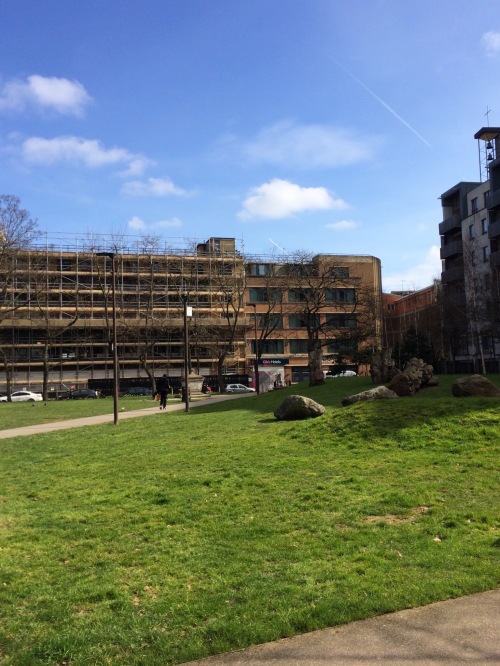
Altab Ali Park – spot the tomb!
Formerly known as St Mary’s Park, this is now Altab Ali Park with an interesting history. It occupies a very historic site on the Whitechapel Road, itself following the line of the ancient Roman road between London and Colchester.

Entrance to Altab Ali Park
The church that stood here has had many iterations.
The first was a chapel of ease, built between 1250 and 1286. Constructed using a white chalk rubble, the area becoming known as Whitechapel, a name that has been in use since 1344.
Wrecked by a storm, it was rebuilt in 1362, thanks in no small measure to a Papal Bull negotiated by the absentee rector – Sir David Gower, then a Canon of St Patrick’s Cathedral in Dublin – that promised remission of sins for pilgrims who parted with their money on visiting the church.
Known as St. Mary Matfelon, it stood until 1763 when it was demolished and replaced by a red brick church.

St. Mary Matfelon 19th century (Image London Illustrated News)
It was found to be structurally unsound in the later part of the 19th century and was reconstructed between 1875 and 1878.

St. Mary’s c. 1878 (Image Wikimedia Commons) Note the Drinking Fountain!
Unfortunately, it was then destroyed by fire just a few years later in 1880.

After the fire (Image Wikimedia Commons)
It was rebuilt again in 1882 and stood here into the 20th century until Seriously damaged by bombing on December 29, 1940. When the remains were struck by lightning in 1952 it was finally demolished shortly afterwards.

The bombed shell of St Mary’s (Image Wikimedia Commons)
The site was used as park thereafter. During an archaeological dig by the Museum of London in 2012, remains of the original buildings were found and the park was reviatlized . It now includes a raised walkway outlining the footprint of the earlier churches, with some sections of the original masonry on view.
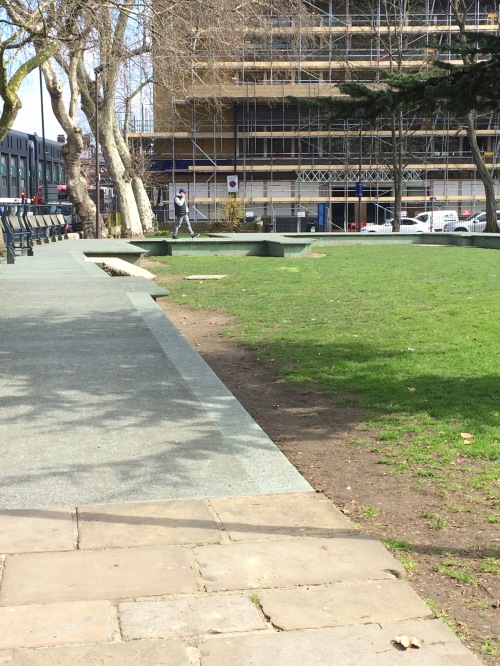
The path follows an outline of one of the original churches

Fragments of the original structures alongside the paved area marking the footprint of the church.
The area is now grassed over, but what of the burials that took place here down the ages? Unlike St James Park mentioned above, there were no reinternments. The graveyard is the last resting place for some notable men, such as Richard Brandon, the alleged executioner of King Charles 1, who died in 1649, and Sir John Cass, the educational philanthropist who died in 1718. There was a rather gruesome discovery in the church belfry in 1863 when 11 coffins and skulls of many children were discovered during repair works. It was surmised that the coffins may have been dropped through the belfry roof by families unable to afford the cost of a grave, but wanting the remains to repose in a Christian site. In the following year, there was a further gruesome discovery when a ‘pile of bones’ was discovered in one corner of the graveyard. Newspaper reports stated that there were at least 18 bodies and that they were ‘shockingly mutilated’. Nothing seems to have come of the investigations into this and the conclusion was that these remains had been stored in a bone house.
In common with other graveyards in London, St Mary’s became very overcrowded and by the mid 19th-century burials ceased. The Gentleman’s Magazine noted in December 1850 that “St Mary is setting an excellent example to the Metropolitan parishes whose churchyards will soon be closed under the Internments Act. It was planted with trees and shrubs as it was a known fact that trees absorb and convert noxious gasses given off by the process of decomposition of the body. ”
The graveyard has now been cleared of headstones which have been ‘tidied’ to the perimeter.
The tomb of the Maddock Family, timber merchants, who lived here in the early 19th century is a prominent feature of the park and serves as a ‘hangout’ for socializing youths.

The Maddock Chest Tomb
And so, St Mary’s has now become Altab Ali Park, a strange name for a landmark in London. It was renamed in memory of a 25-year-old Bengali textile worker who was murdered by three teenage racists on May 4, 1978, as he made his way home from work. At that time racial tensions were running high especially in London’s east end, which had attracted a lot of Pakistani immigrants. The thugs who murdered him, spurred on by the vicious racism of the National Front, said they did it because he ‘was a Paki’. From the tragedy has come some good- the park is the first public space to be named for an immigrant and every year in May the Altab Ali Commemoration takes place in this historic place.
 In one corner of the park is the Shahid Minar, representing a mother protecting her children with the red sun behind. The Shahid Minar is also referred to as Martyr’s Monument. It has deep cultural and historical significance for Bengalis as it commemorates five Bengali students shot dead on 21 February 1952 in a demonstration in support of the right to use the Bengali language within Pakistan.
In one corner of the park is the Shahid Minar, representing a mother protecting her children with the red sun behind. The Shahid Minar is also referred to as Martyr’s Monument. It has deep cultural and historical significance for Bengalis as it commemorates five Bengali students shot dead on 21 February 1952 in a demonstration in support of the right to use the Bengali language within Pakistan.
Altab Ali Park has had an interesting history down the centuries. Scores of individuals pass through here each hour, most of them unaware of what lies beneath their feet.
Set into the exterior wall by the entrance is my most favourite feature of all. It is the drinking fountain which has witnessed many changes. Although relocated, I love that it is seen almost exactly as it is today, in the image of the church of St Mary’s c.1878 above.

The Pink Marble Drinking Fountain dates from 1860. A good resting place for a bicycle.
Sources/Further Reading
The history of this site is contained on information boards at the perimeter.
SurveyofLondon.org
British Newspaper Archives
http://www.towerhamlets.gov.uk
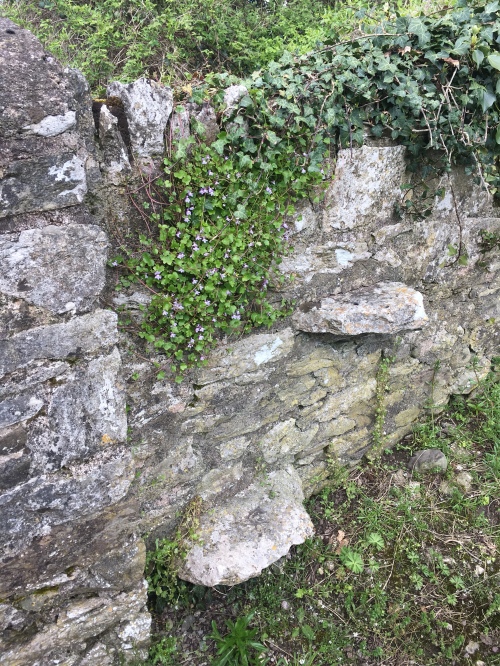 My lunchtime walk today was to a little churchyard on the tidal estuary of the Owenacurra River, near where I live. A church built c. 1550, and already in ruins by 1615, is a feature of this place. Originally part of the demesne of Ballynacorra House, the graveyard has many interesting headstones and grave markers.
My lunchtime walk today was to a little churchyard on the tidal estuary of the Owenacurra River, near where I live. A church built c. 1550, and already in ruins by 1615, is a feature of this place. Originally part of the demesne of Ballynacorra House, the graveyard has many interesting headstones and grave markers.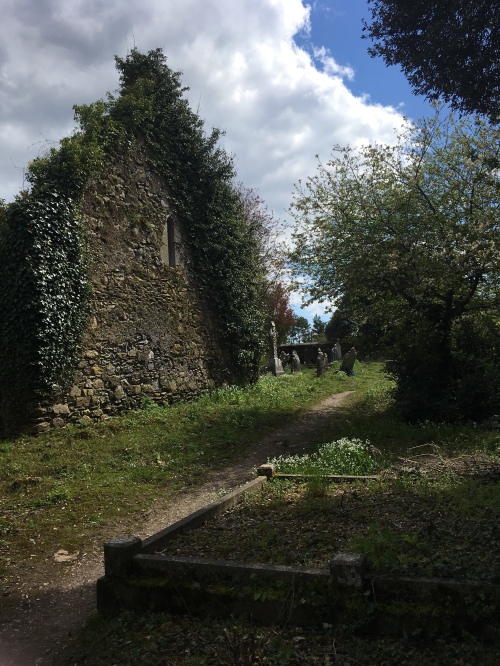
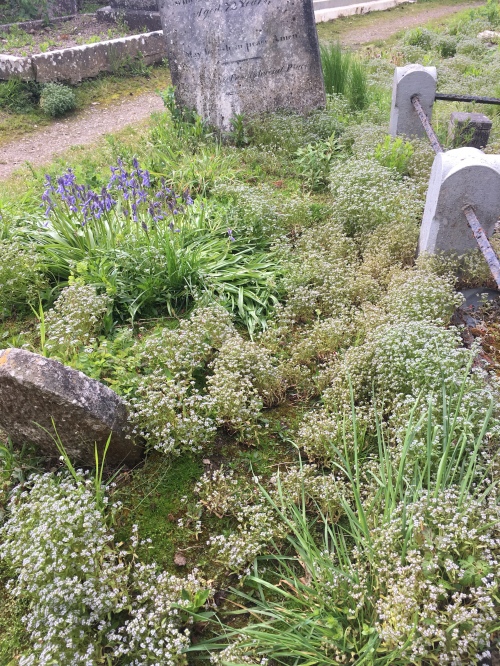
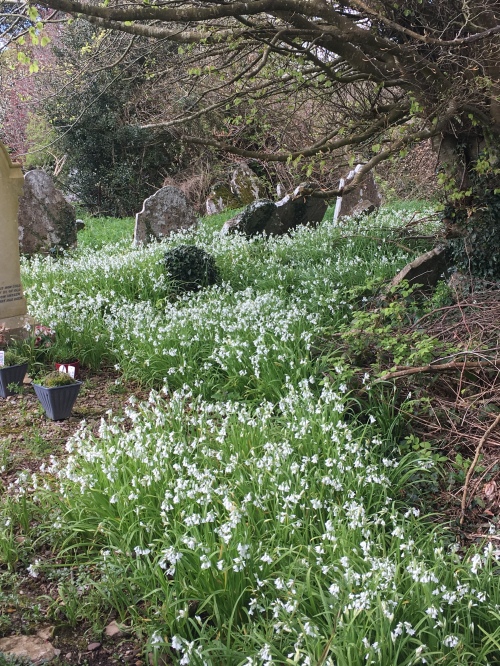
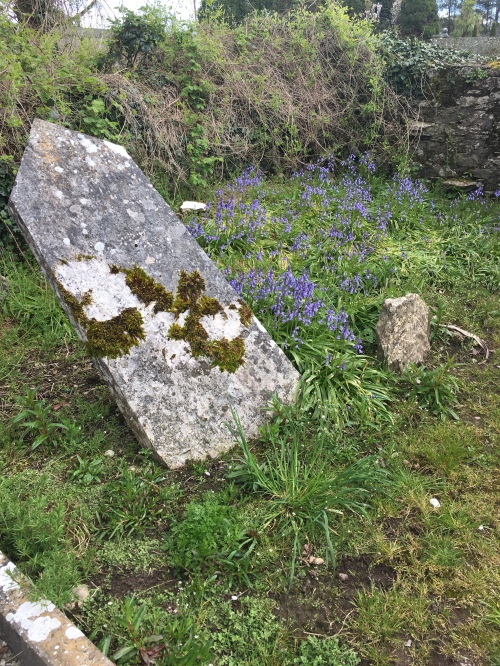
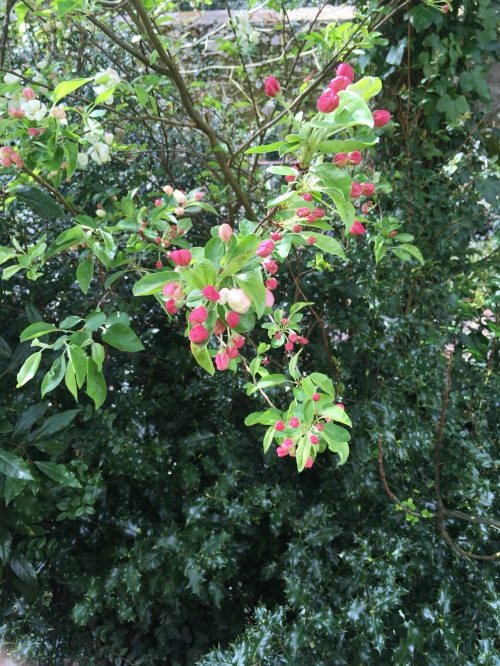
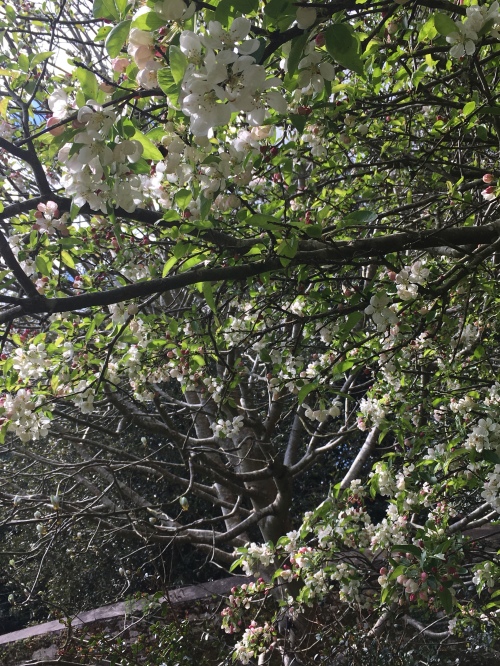
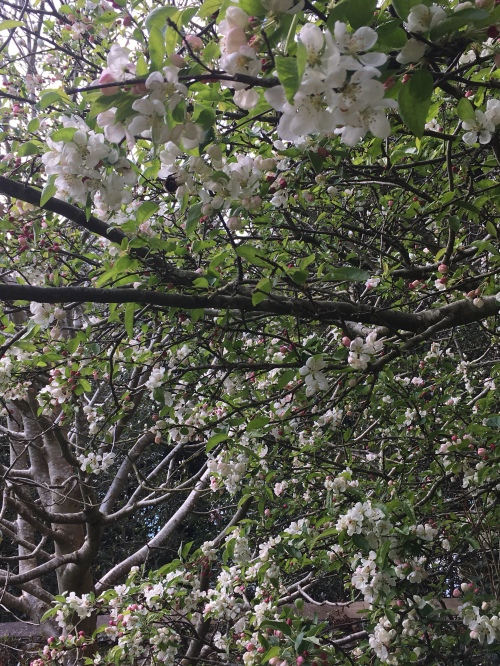
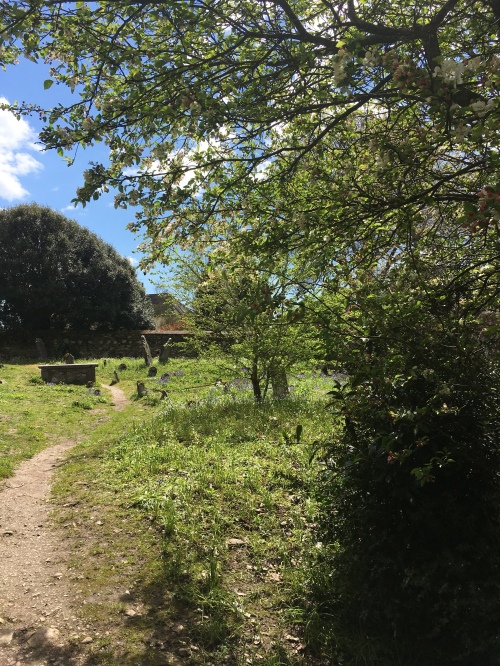 Smaller clumps of wildflowers are scattered about
Smaller clumps of wildflowers are scattered about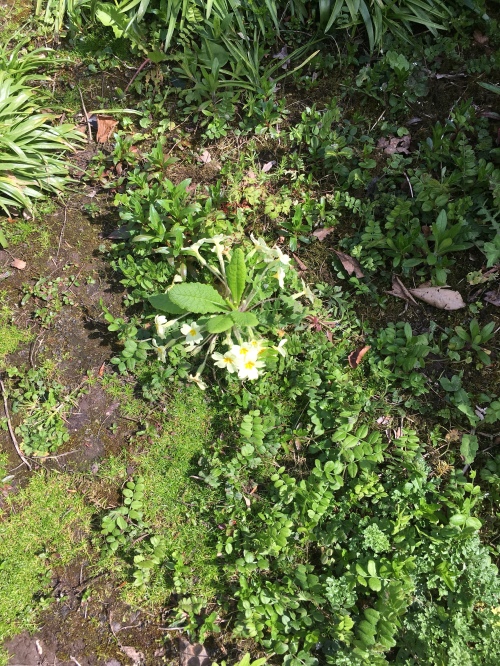
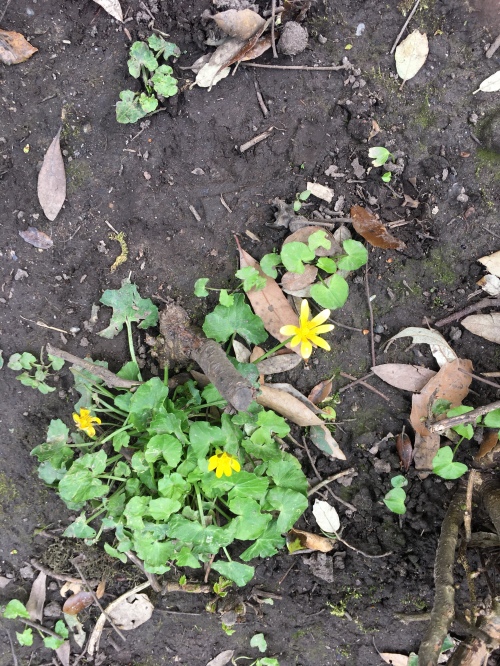
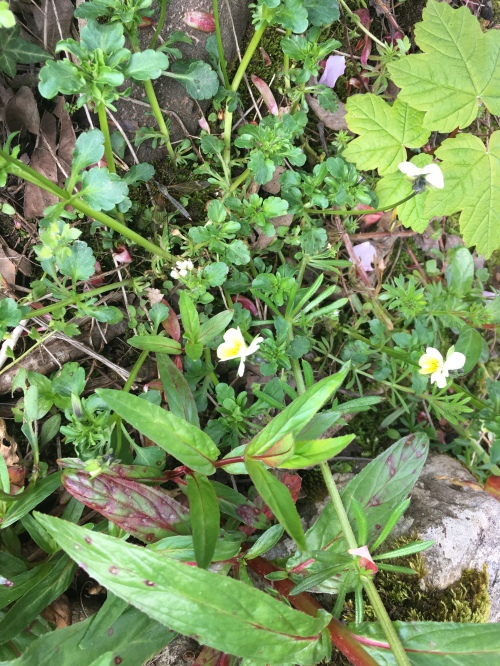 So many beautiful vistas here.
So many beautiful vistas here.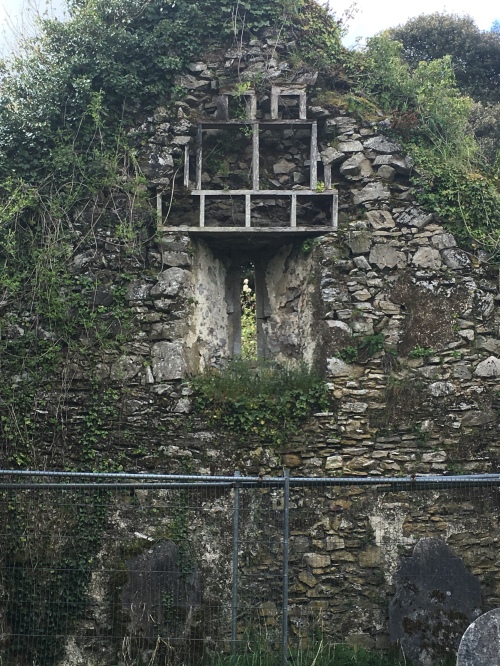
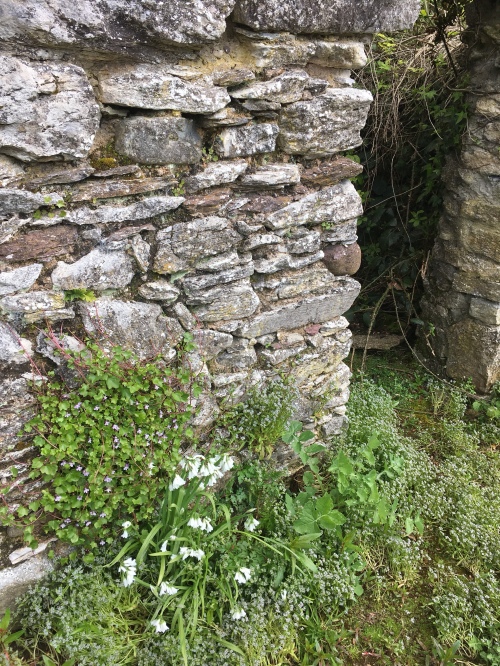
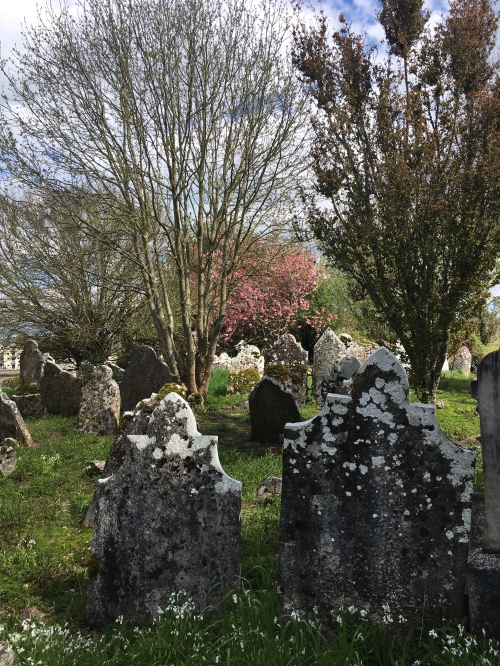
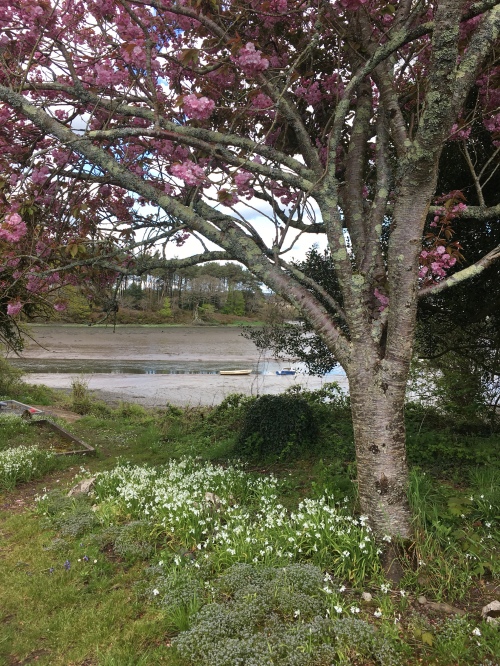

 John Church, Age Action’s CEO, opened the proceedings welcoming the finalists who are challenging ageist stereotypes and making the internet work for them.
John Church, Age Action’s CEO, opened the proceedings welcoming the finalists who are challenging ageist stereotypes and making the internet work for them. The Minister of State at the Department of Health with responsibility for Mental Health and Older People, Jim Daly T.D. began the ceremony. He said that by developing technological skills older people increase their independence and confidence. He praised the Age Action Getting Started programme and Eir for providing a nationwide mobile and broadband service that enhances lives. Hi
The Minister of State at the Department of Health with responsibility for Mental Health and Older People, Jim Daly T.D. began the ceremony. He said that by developing technological skills older people increase their independence and confidence. He praised the Age Action Getting Started programme and Eir for providing a nationwide mobile and broadband service that enhances lives. Hi

 Margaret Byrne from Tallaght Co Dublin took this award for her crochet, jewellery and knitting activities on Facebook and her blog ‘
Margaret Byrne from Tallaght Co Dublin took this award for her crochet, jewellery and knitting activities on Facebook and her blog ‘

 Many individuals and groups volunteer with Age Action. They offer thousands of hours tuition on the Age Action Getting Started programme, helping older people to get online. Individuals can be school going teenagers or seniors themselves or may be part of a workforce. There were three awards in this category. The Schools Award went to the girls of the Dominican College, Griffith Avenue, Dublin. I have a particular soft spot for intergenerational interaction and I was delighted for them!
Many individuals and groups volunteer with Age Action. They offer thousands of hours tuition on the Age Action Getting Started programme, helping older people to get online. Individuals can be school going teenagers or seniors themselves or may be part of a workforce. There were three awards in this category. The Schools Award went to the girls of the Dominican College, Griffith Avenue, Dublin. I have a particular soft spot for intergenerational interaction and I was delighted for them! This is for an older person who embraces the internet or technology with a sense of fun and adventure and 76-year-old Mary Dunne was the winner. Mary is a member of the Ardee County Louth Active Retirement Group and thanks to her, 80% of the membership of that group uses the internet! She handles group bookings in Ireland and across Europe and is a big fan of Pinterest when looking for ideas to decorate her local church. Her 6 children and 16 grandchildren are all on Whats App and Mary likes to use Bet Finder for backing horses! Mary is a promoter of internet safety and aims to alleviate fears of some older people around using the internet. A worthy winner!
This is for an older person who embraces the internet or technology with a sense of fun and adventure and 76-year-old Mary Dunne was the winner. Mary is a member of the Ardee County Louth Active Retirement Group and thanks to her, 80% of the membership of that group uses the internet! She handles group bookings in Ireland and across Europe and is a big fan of Pinterest when looking for ideas to decorate her local church. Her 6 children and 16 grandchildren are all on Whats App and Mary likes to use Bet Finder for backing horses! Mary is a promoter of internet safety and aims to alleviate fears of some older people around using the internet. A worthy winner! The very impressive winner of this award was 98-year old David Rowe from Sandyford in Dublin. David keeps a close eye on planning applications in his area on behalf of An Taisce. He prepares submissions for policymakers and contributes articles to his local community magazine as well as designing covers. He has edited 8 books since his ‘retirement’ and uses IT for the benefit of a number of voluntary organizations. David is a real treasure in his community!
The very impressive winner of this award was 98-year old David Rowe from Sandyford in Dublin. David keeps a close eye on planning applications in his area on behalf of An Taisce. He prepares submissions for policymakers and contributes articles to his local community magazine as well as designing covers. He has edited 8 books since his ‘retirement’ and uses IT for the benefit of a number of voluntary organizations. David is a real treasure in his community! From Carrigtwohill, Co Cork Gordon Lawson came to grips with technology in his 80s. Now aged 99, Gordon enjoys staying downloading music, online banking and social media to stay in touch with friends and family. As Secretary of his local church group he keeps minutes up to date and has downloaded flight simulators to keep in touch with his former career as a pilot with the RAF! Gordon loves to help others by using technology and he coordinates the delivery of the Meals on Wheels service locally, even delivering meals to people older than himself!
From Carrigtwohill, Co Cork Gordon Lawson came to grips with technology in his 80s. Now aged 99, Gordon enjoys staying downloading music, online banking and social media to stay in touch with friends and family. As Secretary of his local church group he keeps minutes up to date and has downloaded flight simulators to keep in touch with his former career as a pilot with the RAF! Gordon loves to help others by using technology and he coordinates the delivery of the Meals on Wheels service locally, even delivering meals to people older than himself! Not only does she do her craftwork online, but she also campaigns for survivors of mesh implant complications through her online support group ‘Mesh Survivors Ireland’ which she co-founded. (Mesh implants were seen as a ‘cure’ for postnatal incontinence, but many women who received them have been incapacitated as a result). The group provides support to 250 members through online contact as well as at meetings and through support groups. Margaret’s campaigning has led the Minister for Health Simon Harris to agree to carry out an investigation into the impact of mesh implants.
Not only does she do her craftwork online, but she also campaigns for survivors of mesh implant complications through her online support group ‘Mesh Survivors Ireland’ which she co-founded. (Mesh implants were seen as a ‘cure’ for postnatal incontinence, but many women who received them have been incapacitated as a result). The group provides support to 250 members through online contact as well as at meetings and through support groups. Margaret’s campaigning has led the Minister for Health Simon Harris to agree to carry out an investigation into the impact of mesh implants.













 In one corner of the park is the Shahid Minar, representing a mother protecting her children with the red sun behind. The Shahid Minar is also referred to as Martyr’s Monument. It has deep cultural and historical significance for Bengalis as it commemorates five Bengali students shot dead on 21 February 1952 in a demonstration in support of the right to use the Bengali language within Pakistan.
In one corner of the park is the Shahid Minar, representing a mother protecting her children with the red sun behind. The Shahid Minar is also referred to as Martyr’s Monument. It has deep cultural and historical significance for Bengalis as it commemorates five Bengali students shot dead on 21 February 1952 in a demonstration in support of the right to use the Bengali language within Pakistan.






